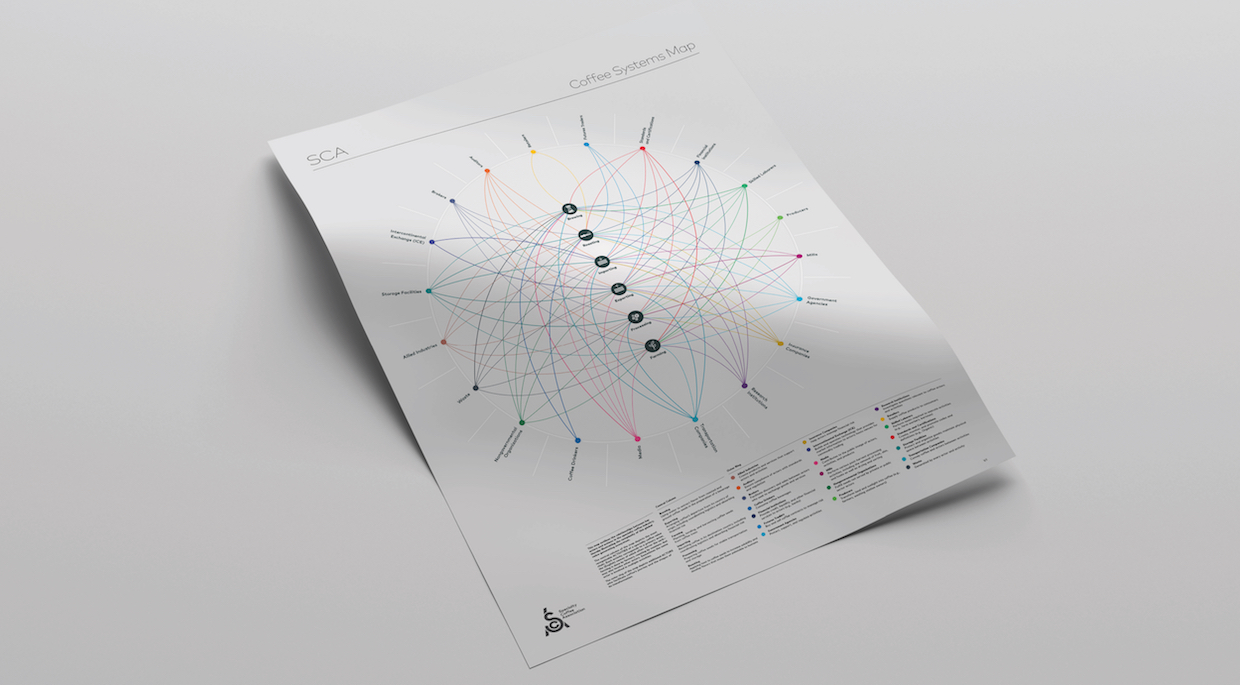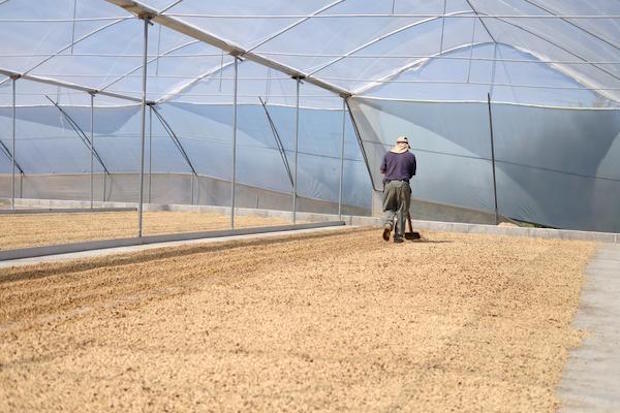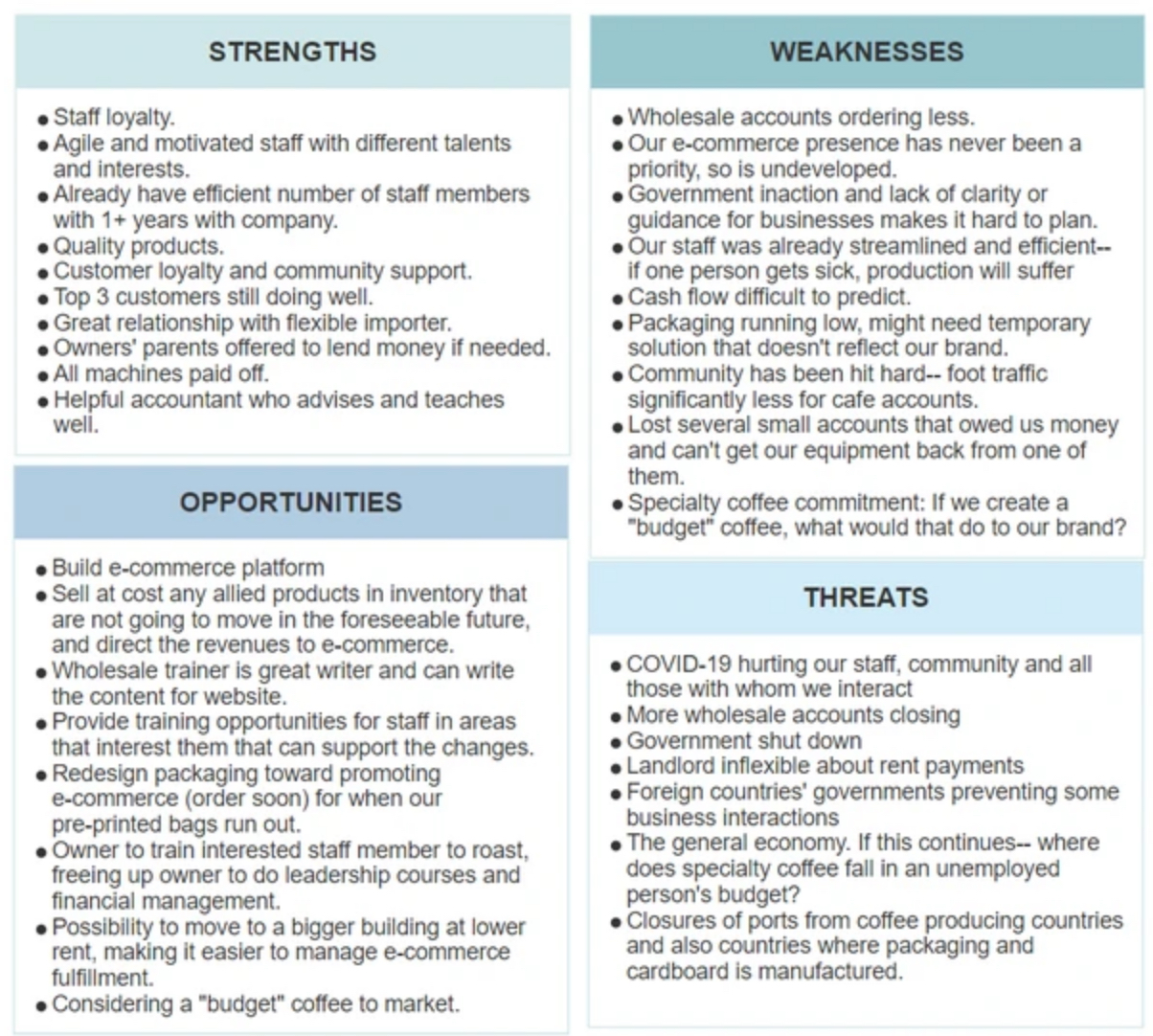
The recently released Specialty Coffee Association Coffee Systems Map, which is currently available through the SCA store. SCA photo.
When I saw the SCA Coffee Systems Map (published in June 2020), I immediately thought it could be a useful tool for business and human resources of any coffee-related company anywhere in the world. Especially with the industry challenges created by coronavirus disease COVID-19, the map could help with restructuring, learning and development initiatives.
But that’s not its intended use. In 2018 the SCA set up a Price Crisis Response Initiative to produce a report of recommendations on actions the industry could take to mitigate the crisis. The SCA’s sustainability practitioners needed a comprehensive understanding of stakeholders to work on their goals to address the pricing crisis, which has not abated in the time since they began the system analysis.
The map delineates the relationships between key actors and activities in the specialty coffee industry. The central column of the diagram names the core activities of the specialty coffee industry. The outer ring of the diagram names additional participants who engage in some aspect of coffee’s development, enhancement, or movement throughout the system.
Now that they have this map, the sustainability committee and the price crisis thinkers will use it as a tool to help them continue their strategizing. They have shown us how daunting their job is.
Adding to the vulnerability produced by the price crisis, the COVID-19 pandemic has rocked every stakeholder on the map, and tragically many companies have closed their doors (20% of small businesses in general in the United States have closed). This virus juggernaut batters both the finances and human resources of much of our industry’s organizations. What can we do to stay viable? For those companies that still have the ability to maneuver, perhaps this map could be a tool for analyzing, planning, and taking action to navigate the months ahead.
In this post, I’ve imagined a couple of SWOT-type exercises (defined later) using the map. If you are feeling powerless or overwhelmed, having a structured way to examine your industry connections might help you make decisions on how to withstand the current situation until things stabilize.
Scribbling on the Map
The map was not created for business analysis, so before we begin there are a few structural questions we will have to overlook. I cannot find a narrative or guide explaining the reasoning or ambiguities of the map, but there is a legend at the bottom with definitions.
We coffee people are great at adapting and doing our own thing, so when you find incongruities while you work with the map, go ahead and make changes that match your business interactions. Feel free to add lines, edit players, and make this tool useful for your internal company purposes. In the end you’ll have your own systems map. Just like many of us have adapted the cupping form for internal QC purposes, why not do the same with this map?
The map’s central column of activities corresponds to primary actors who do the verbs listed. These actor-verbs interact with one or more other actor-verbs within the central column, but there are no direct lines between them — you have to connect them via a player on the outer ring. Likewise, outer ring players can only connect with each other via an actor-verb in the central column. For example, the outer ring “Skilled Laborers” is one category that connects all the central column actor-verbs. Thus, a roaster-roasting connects to an importer-importing via a skilled laborer (or via a government agency or via waste, etc.). I look forward to an SCA manual to help understand why they made this design choice.
There are a few other head-scratchers, too. For example:
- Farming translates to “farmer” as an actor, but there are “Producers” on the outer ring who “transform land and sunlight into coffee (e.g., farmers, washing station owners)”. We often interchange usage of “farmers” and “producers” in discussions — what really is the difference between them? Also, many producers interact with importers, which is a line that was missed in this version.
- Not on map: Technology Support (website development, database admin, e-commerce, shipping tracking, etc.). Is it so ubiquitous that it is understood? Isn’t “waste” also inescapable for every actor (it’s on the map, though)? And if there are “skilled laborers” are “unskilled laborers” considered part of everything like technology?
Keep in mind, the map is for the Price Crisis Response Initiative’s use, and we are using it differently. If the lines become hypnotic or confusing, it helps to just look at the legend and work off of that or erase the lines. Despite the issues, there still are gems in the map that we can work with.
Mining the Map
Here are some questions to get you familiar with the map and your organization:
- Which activities and players are part of your company? Which employees play more than one part?
- Which employees interact with which of the actors on the map?
- Are there actors that nobody at your company deals with, but those actors impact the organization (like the ICE, Research Institutions, or Futures Traders)?
- Which ones are the major partners? How have their struggles been affecting your work these days?
- Which secondary players affect your company by impacting your major partners?
- Which actors (and central column activities) have the most financial impact on the business?
CASE STUDY: You are a wholesale roaster (1000 bags/mo.) in a neighborhood in a small city. You buy coffee both on spot and with forward contracts using just one importer who is a good and trusted partner. You also supply allied products and do training for wholesale accounts (coffee shops and businesses that are your main source of income).
Your answers to the above questions might highlight the following map actors with multiple, overlapping others:
- Roasting – This is the core activity of the company. It would include roasting the coffee and all the activities from receiving the green coffee, through roasting, packaging, and shipping the finished product out to customers. Each one of these activities involves other actors on the Systems Map; for example, packaging shipments from overseas may have been delayed (map actors: allied industries, transportation, government agencies).
- Retailers – We know these are severely impacted. According to the National Coffee Association’s Q2-2020 Market Analysis, restaurant/takeout coffee was down 46.7%. Map actors involved: Skilled laborers, media, brewing, financial institutions. This also impacts the roasting company staff involved in wholesale account management and training.
- Importers – These are impacted by the ICE, futures traders, storage facilities, skilled laborers, producers, transportation companies, financial institutions, auditors, insurance companies, standards and certifications, nongovernmental organizations (NGOs), government agencies, processors, and exporters, in both the US and countries with governments trying to mitigate COVID-19. Seeing how complex an importer’s connections are should make a small roaster understand the need to be sure to give good time for green coffee orders. This may also mean giving more time with financial institutions considering the influx of loan requests they’re receiving currently. Just putting focus on those two players could help a small roaster avoid outages that might further cause stress on the business.
- Transportation Companies – These are probably also impacted by insurance companies and financial institutions. Deliveries are taking longer, and despite lower fuel costs some routes are more expensive and congested than before (due to more e-commerce volume).
- Coffee Drinkers – Coffee drinkers are about 60% of the general population. Those coffee drinkers who used to go to cafés fall in the -46.7% (see “Retailers” above), and any accounts that were “at work” and “food service” were down 48.46%. However, in-home brewing was up 22.65%. With the many challenges facing families and communities, our case study might review its coffee offerings and pricing. They might ask questions like, should we buy 80-83 point coffees to offer a blend at a lower price, or would that change our mission and vision?
- Financial Institutions – These would be impacted by retailers who may be closed with thousands of employees out of work, which will have a ripple effect. For our case study the roaster may be directly impacted by its financial institutions (loan repayments, credit facilities, cash, etc.). These institutions are also swamped with government loans, and the roasting company may need to find temporary solutions for cash.
- Government Agencies – The impact of government agencies can be helpful for a roaster now in the form of loans, and many facility inspections are not happening currently (or have been postponed). Standards, certifications and auditors are affected. Other than that, there are a number of local, state, and federal government agencies that impact the roasting business.
- Insurance Companies – There may be time-lags for insurance claims, and workers comp or employer liability may come up. Health insurance and the exposure to insurers is unclear right now. Reinsurers may be called to pay claims for business interruptions, but this is likely to be influenced by government agencies, auditors, and even financial institutions.
- Allied Industries – Our case study roaster would look at each of its allied products and study the impact on each. This includes essential supplies like packaging and cardboard, but also other products the roaster may sell, like syrups or branded paper cups. The roaster may be stuck with allied product inventory not able to be sold to its wholesale accounts. The maze becomes even more complicated with all the allied products’ supply chains. Transportation is a major actor.
We can see from this simple case study how the systems map can help inform the SWOT Analysis that we’ll talk about next. It can also give immediate answers on how business might be impacted. This type of analysis can inform cash flow, too. Where might you negotiate a deposit on some supplies instead of a full payment into something that won’t be delivered for a couple months? Which activities are revenue-creating and able to be accomplished now?
Using the Map to Swot
Taking time to use the simple, tried-and-true SWOT Analysis to review your organization’s current position can help you craft a strategy. SWOT stands for Strengths, Weaknesses, Opportunities, and Threats, and a SWOT Analysis assesses these four aspects of your business. More than ever, the practice of including all employees in company “change” activities can bring a company together as a team to predict and improve, determine and formulate everyone’s work tasks.
I’m not selling SmartDraw
software, but they have a great tutorial (even with a coffee company example) on SWOT here. When doing a SWOT Analysis, sometimes it’s difficult to generate a comprehensive list in each category. This is where the SCA systems map is useful.
A simplified SWOT for the roasting company case study above might look something like this:
If we wanted to take action right away, we could identify employees who might use their talents differently. The business owner might train the wholesale account manager (who has lost most of his daily work) to roast. The owner would redirect her former roasting hours to do things like:
- Meet with her accountant on cash flow projections,
- Apply for loans and negotiate lower interest rates with banks and credit cards,
- Contact insurance agencies for money-saving options,
- Keep current on changing local laws and rules,
- Create a buying plan and payment schedule with her importer to help budget, etc.
As we noted, the Systems Map doesn’t include “technology”, but e-commerce is a major focus of coffee businesses during the pandemic. Current employees who are under-utilized and interested in this type of work could be redirected and attend online workshops (often free from e-commerce platforms). Effectively running e-commerce takes a lot more time than many people realize. Putting a couple of employees on search engine optimization, utilizing all the e-commerce platform’s tools, integrating social media accounts, creating content (video, audio, images, blogs, product descriptions, etc.), setting up the analytics to empower and guide decisions, and leveraging customer feedback and information all can generate revenue, when done well.
The roastery owner may realize her best investment may be in taking time to expand her leadership skills to help staff stay engaged, motivated, and supported as things change. As staff members’ jobs morph during this period, it is important to keep a record of accountabilities and tasks. Job design and workload are important for employee motivation. Being in tune with employees and responding to their needs for learning or different work tools, while at the same time managing costs (finding free resources or discounted supplies), might be the outcome of the SWOT for the owner of our case study roastery.
The SCA Coffee Systems Map was created to help understand sustainability. Using it to focus on our businesses can do just that; with analysis we can keep our companies adapting, learning, and developing during these challenging times. We are a resilient industry, and coffee people who love their work are famous for breaking molds and operating way outside of boxes while still playing well within the system.
Additional reading on the Map and how it was created:
- https://sca.coffee/sca-news/announcements/systems-map
- https://sca.coffee/coffee-systems-map
- https://sca.coffee/sca-news/25-magazine/issue-11/mapping-the-complex?rq=map
- https://scanews.coffee/news/designing-a-map-of-the-global-coffee-sector-part-1/
- Price Crisis Response Initiative: Summary of Work, December 2019 (this needs to be accessed through the SCA member portal)
This story originally appeared at Ally Open, an initiative of Ally Coffee. It is republished here with permission as part of an unpaid editorial collaboration. Any views or opinions expressed in this piece are those of the author and are not necessarily shared by Daily Coffee News.
Ildi Revi
Ildi Revi, M.Ad.Ed. is the director of learning for coffee importer Ally Coffee. A Q Arabica Instructor, and a Certified Performance Technologist, Revi has designed and conducted learning programs for more than 25 years for companies, educational institutions, government projects and NGOs, delivering classes to coffee professionals around the world.












Comment